#stingless bees
Text
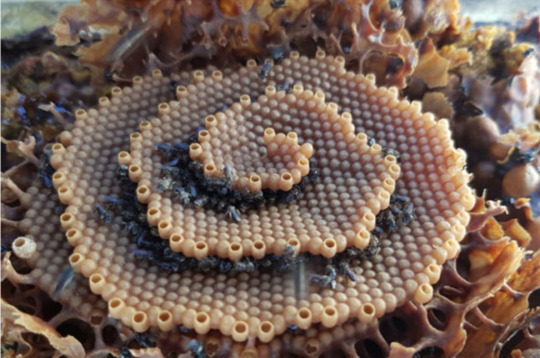

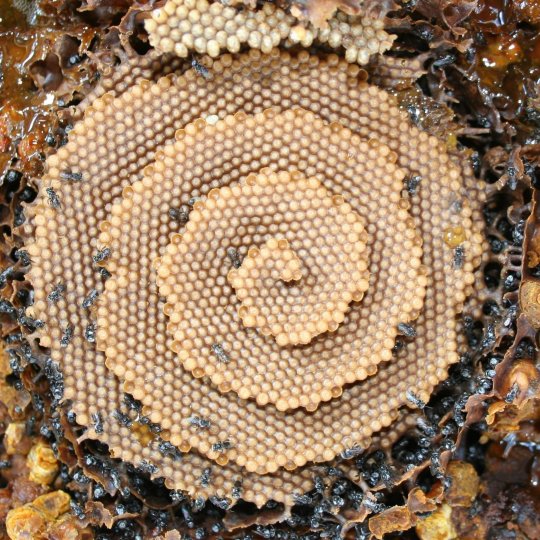
Fun fact: the stingless bees Tetragonula carbonaria can make beautiful spiral structures in their hives to house their young!
Source: Tim Heard, for a paper on how this mimics crystal growth
13K notes
·
View notes
Photo
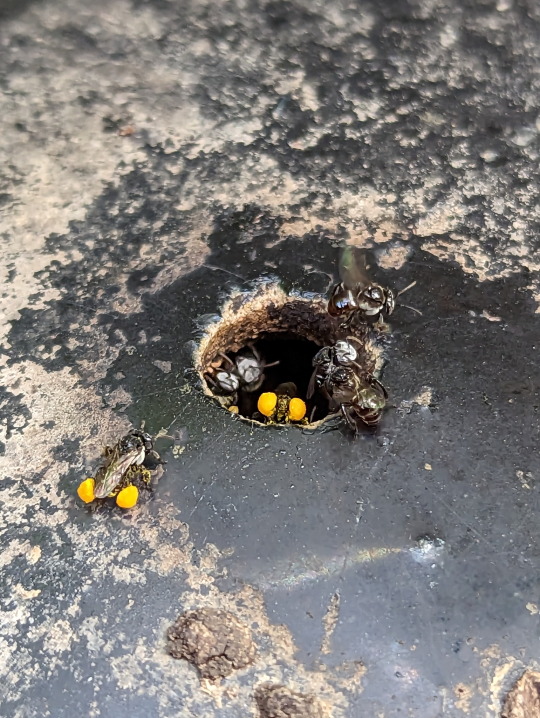


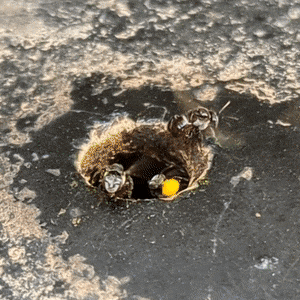
Native Stingless bees with pollen pants
These bees sure are busy!
They appear to be nesting inside an old plastic fountain. I’ve also seen them nest in walls, cracked concrete, really anywhere that’s good for them.
The bees are also carrying big balls of pollen. Because of the position of the pollen on their legs, it looks like they’re wearing puffy pants ❤
Unidentified, Tribe Meliponini
02/01/23
#Meliponini#Stingless Bees#Apinae#Apine Bees#Apidae#Anthophila#bees#Apoidea#Aculeata#Apocrita#Hymenoptera#bugblr#bugs#bugs tw#bug#insects#insecta#insect#insectblr#insects tw#entomology
2K notes
·
View notes
Text



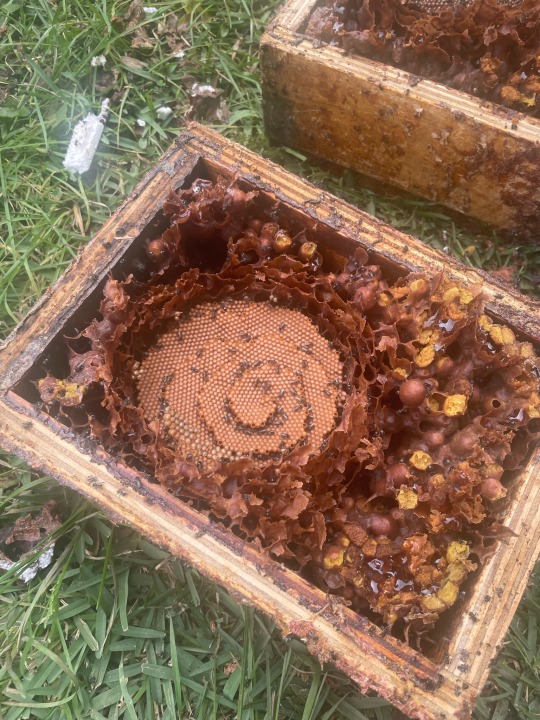
I've had the chance to help a local council with their native Australian bee hive program! The program places free native stingless bee hives (Tetragonula carbonaria) in the homes of people who live in the council area.
These are one of only a handful of native species that can be kept in a hive box. But these hive boxes are very different to the honeybee hives most people are familiar with. Instead of frames the boxes are empty and the bees build a big spiral structure of brood cells using resin, with the queen sitting at the bottom. They'll then create "pots" on the edges of the hive that they fill with honey or with pollen (the yellow in the photos is the pollen).
Because of this we can actually literally split the hive in half; top and bottom and create two new hives. One half of the colony keeps the original queen and the other half we make sure have princess cells. One of the princess cells will go on to become the new queen of that half of the hive.
#beekeeping#native bees#bees#entomology#stingless bees#tetragonula carbonaria#my photography#my research#my studies
201 notes
·
View notes
Photo
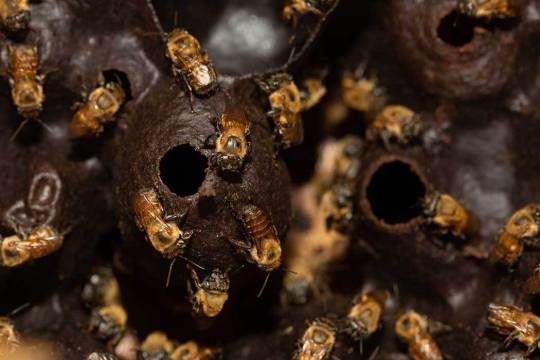
These stingless bees make medicinal honey. Some call it a 'miracle liquid.'
People in the tropics use several types of stingless bee honeys and wax from their hives to treat upper respiratory infections, skin conditions, gastrointestinal problems, and even diabetes and cancer.
PHOTOGRAPH BY ANA ELISA SOTELO
#ana elisa sotelo#photographer#stingless bees#bees#insect#national geographic#animal#tropics#medicinal honey#nature
21 notes
·
View notes
Text

✨cool bug facts's✨
The Tetragonula carbonaria, or the sugarbag bee!
Goth bee!! 🐝🐝🖤🖤
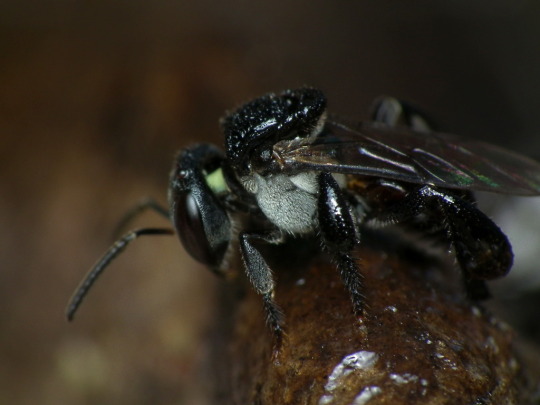
The anatomy of these indefatigable insects!!!
They are a species of stingless bee. This does not mean that they don't have a stinger, rather, they have a functionless stinger.
The adult workers and males are mostly black and have some brown tints in certain areas.
Newly emerged bees are white on every part of their body except their abdomen.
The workers body length is around 3.9 mm to 4.3 mm, and their wing length (including tegula) is around 4.1 mm to 4.6 mm. The males are the same length, but have different antennae.
They produce the largest honey and pollen pots out of the genus Tetragonula.
They store their honey in pot-like structures around the nest, that the queen lays eggs into, and then a worker quickly seals the pot that the queen fertilized.
Unlike other stingless bee species, they store their honey in pots rather than combs.
If their queen suddenly dies, they can build emergency queen cells by fusing two worker-sized cells that contain eggs or young larvae.
Some queens can only produce diploid males, who are infertile and physically weaker. Workers find these males to be a nuisance to the rest of the hive, and might kill a queen who produces diploid males.
The center of their nest is made up of honeycombs in a spiral shape. Even the molecules of these honeycombs are spiral-shaped.
Their honey has a sour taste to it.
Diet.
They pollinate the orchid species Dendrobium lichenastrum, D. toressae, and D. speciosum.
They collect their pollen from the Cycas media, which is a cycad.
Behavior.
Sugarbag bees do not like flying, and will not fly further than they find necessary.
The younger bees perform their work in the nests, and as they get older they will start working outside of nests.
They consistently have four to five worker bees surrounding the nest, seemingly acting as guards.
They will only fly in temperatures higher than 18 °C, and temperatures above 42 °C can kill them.
Their colonies are active all year round, the daily activity period is longer in the southern hemisphere's warmer months. The intensity of the daily flights is most intense in September and least intense in May.
They mummify small hive beetles (Aethina tumida) that enter their nest by coating them in wax, resin, and mud or soil from the nest.
While the workers do have ovaries, they are inactive. This is unusual, as stingless bee workers can produce unfertilized eggs that can grow into haploid males. This may be because the workers do not want to be distracted from their work, so they leave the egg laying to the queen. Another possibility is that the queen does not permit them to lay eggs due to their inferiority, though little antagonism occurs between the queen and workers, making this theory unlikely.
When a worker does produce an egg, it often causes a conflict between the worker and the queen, and the queen will start the patrol the area where new brood cells are being produced, and using a hands-on policy to prevent this from happening again. Unlike other stingless bee species, the queen does not harm the worker who laid the egg.
When threatened, all nest mates will form a bee-cloud and wrestle intruders, usually causing both the bees and intruders to die. The sugarbag bees may be the only party dying, however, if their intruder is not a bee or a significantly larger creature than the bees, such as a human.
Their main predator is the pink flower spider, or the Diaea evanida, which is a spider crab. This crabs reside on flowers that bees tend to pollinate and can change their colors to suit the preferences for different bee species, but the sugarbag bees do not attract to any of these colors.
Sugarbag bees tend to choose one specific kind of flower to pollinate, usually only for specific trips, but sometimes an individual bee might pollinate only one type of flower.
The males may fly several kilometers away from the nest in order to mate, and may never return to their original colony.
Habitat.
They're exclusively located in Australia, from Queensland to southern New South Wales.
The nests are found in tree hollows and other cavities throughout forests, woodlands, and heaths. T. carbonaria nests are also found in Telstra pits in rural and urban areas, and will inhabit water meters when their usual habitats are not available.
They prefer larger trees and wider tree hollows or cavities in order to produce a sufficient amount of insulation.
#bugs#insects#bees#stingless bees#sugarbag bee#tetragonula carbonaria#bugblr#entomology#melittology#apiology#cool bugs#cool bug facts#cool bug's#cool bug fact's
9 notes
·
View notes
Text

Stingless Bees (Melipona beecheii), family Apidae, Yucatan, Mexico
photograph by Gilles Arbour
229 notes
·
View notes
Text
PSA that honeybees do not build nests. They build hives in pre existing cavities.
#vani verbals#i just watched someone react to my girl and was reminded that like. a TON of people dont know this#edit: what the fuck is going on with central and south american stingless bees#i . dont like that. i already didnt like stingless bee hives WHAT ARE THEY DOING UP THERE#THERES. I CANT FIND ANY RESOURCES ON HOW THEY DO THAT . MY POINT STILL STANDS SINCR THIS POST WAS ABOUT HONEYBEES BUT WHAT THE FUCK???
2 notes
·
View notes
Text


i heard merling ranboo and bee tommy and now these guys exist 👍
#please rb! it helps a lot!#my post#my art#ranboo#tommyinnit#origins smp#osmp#fanart#SO- ranboo is a mosiac axoltol!! bcus they look like them fr fr#and tommy is m. quadrifasciata!!#i did a very brief wiki search to find a fitting bee and these guys are eusocial (they take care of eachother) and build hives out of mud#AND theyre stingless which i just think is funny lol#i did not put this much thought into my actual origins designs#mars.mcyt
30 notes
·
View notes
Text
@183degreesbelowzero submitted: hi sorry to submit twice in a row but I went to my uncle's house over the weekend and got some cool bugs and a lovely couple! also, the last picture was taken at the beach nearby (also in [removed] (please remove!)) and I don't know if or what bug it is

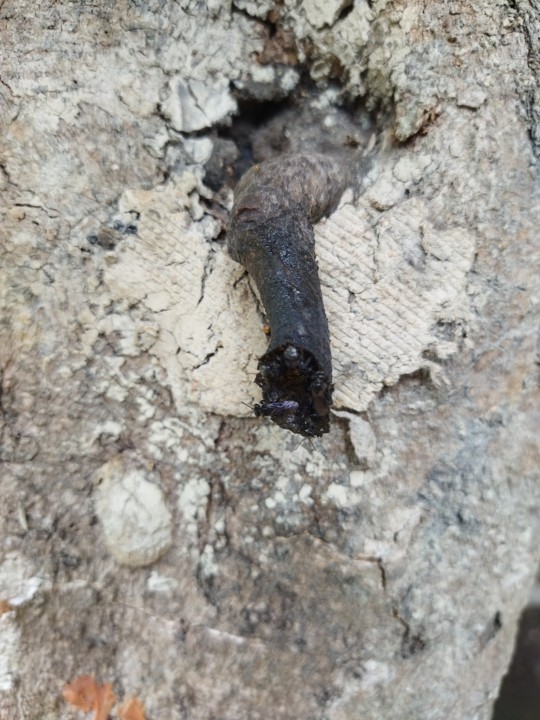







This submission was only visible in my mobile inbox which I don’t normally check so sorry if it took me a while to get to it! A great group of friends, especially the chickens, which we will consider honorary bugs, and the stingless bees in the first couple photos. You didn’t ask for IDs except on the last one so I’ll assume I’m just admiring them! The last fellow is an earwig, though :)
#animals#insects#bugs#spider#arachnids#submission#bee#stingless bee#earwig#true bugs#jumping spider#fly#diptera#long post
55 notes
·
View notes
Text
So tired but at least will have rest before beekeeper workshop on saturday 😊
3 notes
·
View notes
Photo




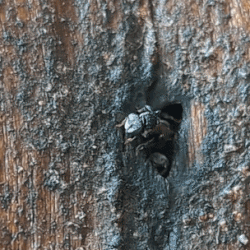
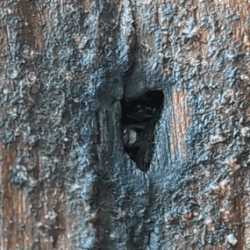
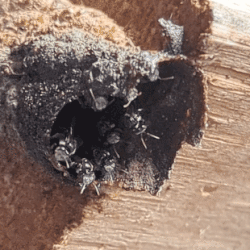

Two Native stingless bee nests,
about a meter or so away from each other.
Meliponini
18/05/22
#Apinae#Meliponini#Apidae#stingless bees#bees#Anthophila#Apoidea#Aculeata#Apocrita#Hymenoptera#hive#bee hive#nests#hives#bugblr#bugs#bug#bugs tw#insects#insecta#insect#insectblr#insects tw#entomology#Arthropods#Arthropoda#nature#nature photography
25 notes
·
View notes
Text

Bee decided to use me as a landing pad while I was working. Very on brand for me.
#I was doing fieldwork with my stingless bees but the honeybees keep sneaking in#my photos#bees#science
36 notes
·
View notes
Text
A nest of stingless bees I spotted when I was visiting Costa Rica
2 notes
·
View notes
Text
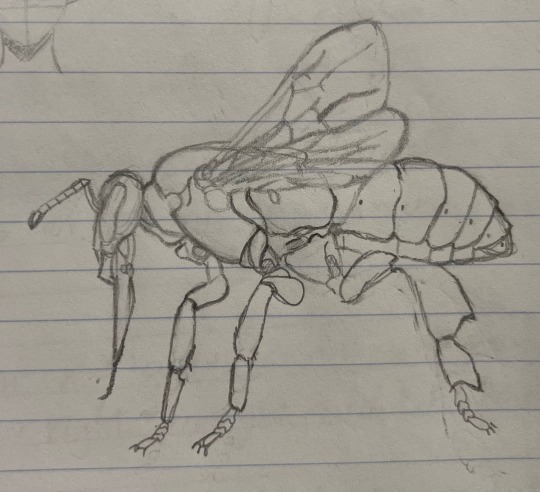
mmm bee
2 notes
·
View notes
Text
I love jatai bees not only because there’s a hive in my backyard and not only because they’re stingless but I think they have such a funny and cute format, A+ design
like just look at this little lady hanging around

or these amazing ladies staring right into my camera lenses

#there's actually TWO hives in my backyard. the other is from another species of bee#they are also stingless but much more shy it's hard to get good shots of them
4 notes
·
View notes
Text
who ever said as sweet as honey clearly has never tasted stingless bee honey
0 notes